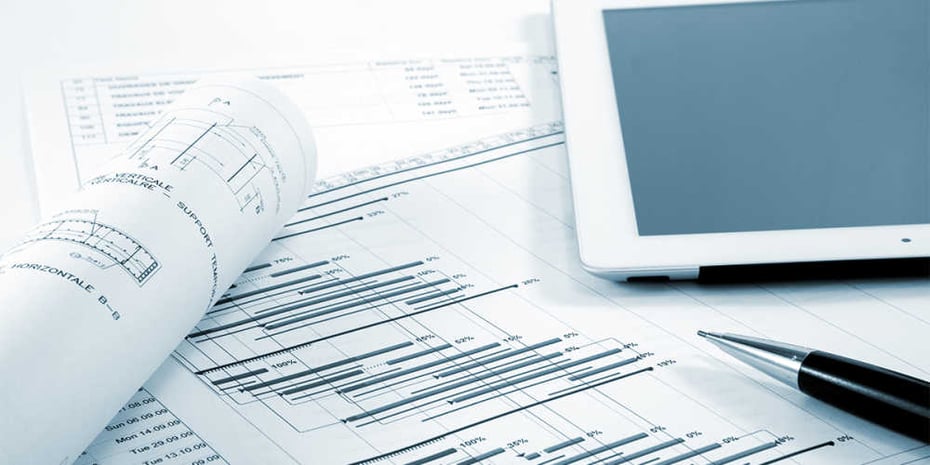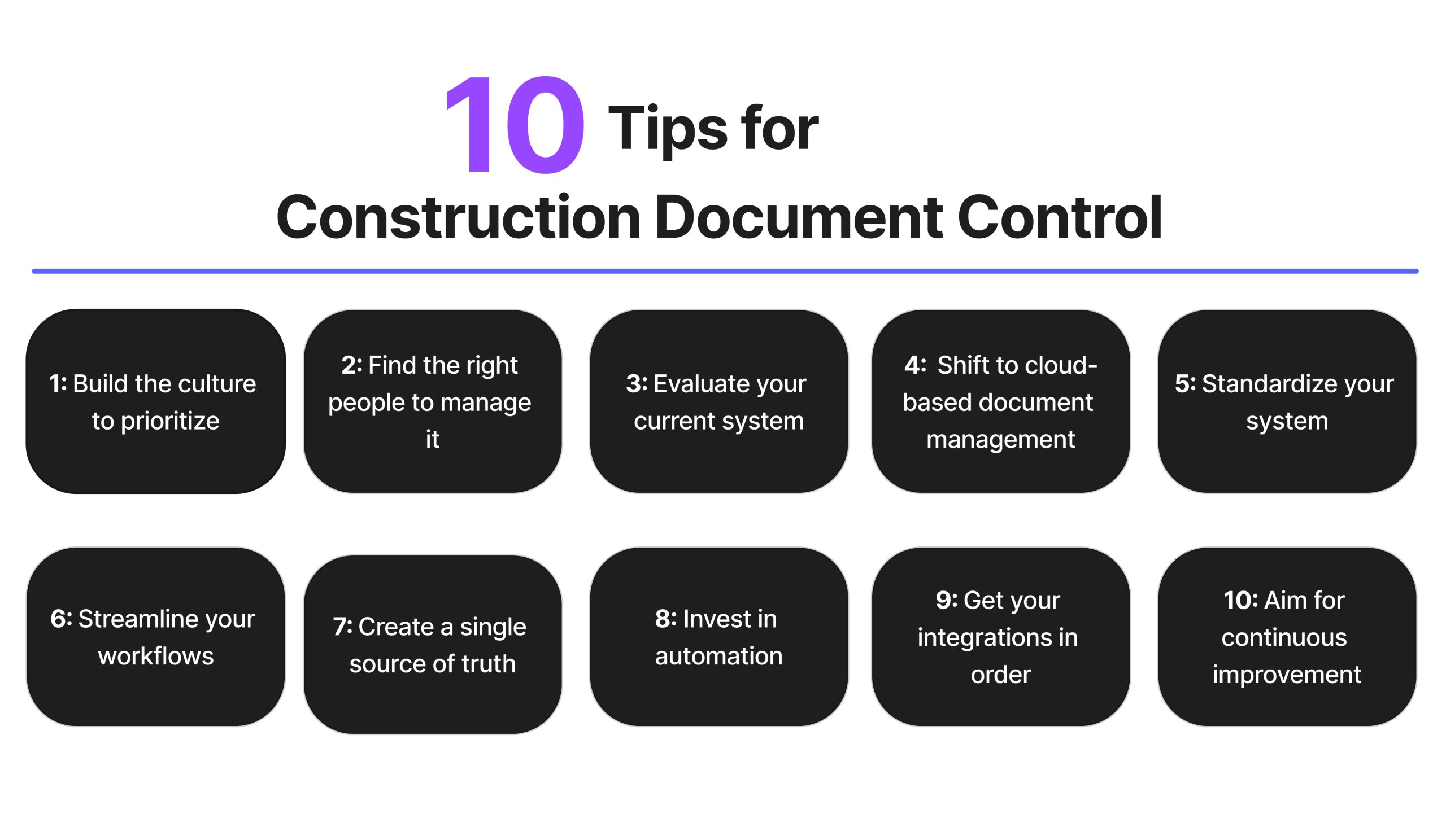From Disorder to Control: Harnessing the Potential of Construction Document Management
From Disorder to Control: Harnessing the Potential of Construction Document Management
Blog Article
Engineer's Guide to Streamlining Building Record Management for Reliable Project Implementation
The procedure of organizing, sharing, and maintaining these records can usually end up being a labyrinth of inadequacies and problems if not handled diligently. By discovering methodical strategies, ingenious devices, and industry ideal practices, designers can not only enhance their paper management processes yet also lead the way for extra efficient job implementation.
Significance of Reliable File Monitoring
Why is reliable record monitoring essential for engineers in the construction sector? Reliable record monitoring is important for designers in the building market as it plays a pivotal role in ensuring the successful implementation of jobs. Architects deal with a vast selection of papers, varying from style drawings and specifications to permits and agreements. Appropriate organization and administration of these papers are crucial to maintain job timelines, ensure compliance with regulations, and facilitate efficient interaction amongst project stakeholders.

Effective document management enables architects to access vital info quickly, track project progress precisely, and minimize threats connected with omissions or errors. By implementing structured file management processes, designers can improve collaboration with clients, contractors, and various other staff member, resulting in enhanced project outcomes and customer fulfillment.
In addition, effective file management aids designers maintain a detailed job background, allowing them to take advantage of past experiences and lessons found out for future tasks. In today's hectic building market, where timely decision-making and info sharing are vital, effective record monitoring is a foundation for success.
Strategies for Simplifying Document Organization
Effective document administration practices not just guarantee project success for designers in the construction market but likewise lay the foundation for applying techniques for improving paper organization. To streamline paper company effectively, designers need to initially develop a clear naming convention for folders and documents. Consistency in calling files based upon task phases, paper kinds, and relevant details will assist in very easy retrieval and minimize complication.
Using cloud-based storage space options can additionally boost document organization by offering a centralized place for all project-related data - construction document management. This enables employee to access one of the most updated papers from anywhere, promoting partnership and effectiveness. Applying variation control systems additionally fine-tunes file company by tracking adjustments, avoiding contrasting edits, and ensuring that the newest versions are constantly readily available
In addition, developing a rational folder structure with designated subfolders for various record groups, such as agreements, specs, and drawings, can simplify paper administration processes. Frequently evaluating and removing repetitive or out-of-date files will certainly help keep a lean and orderly document database, eventually boosting efficiency and task results.
Leveraging Technology Devices for Partnership
In the world of contemporary architecture, designers are significantly counting on advanced modern technology tools to promote seamless partnership amongst job stakeholders. Leveraging modern technology for partnership streamlines interaction, enhances effectiveness, and enhances general project results. Cloud-based platforms such as BIM 360 and Procore permit real-time accessibility to job documents, allowing specialists, clients, and designers to team up effectively despite their physical place. These devices facilitate simultaneous editing and enhancing, variation control, and instant updates, decreasing delays and errors brought on by miscommunications.
Digital style and building (VDC) software application like Revit and AutoCAD Architecture enable architects to develop in-depth 3D designs additional reading that can be shared and edited collaboratively. This real-time cooperation improves style control, precision, and visualization, leading to far better decision-making throughout the task lifecycle. Furthermore, interaction tools like Slack and Microsoft Teams provide instantaneous messaging, data sharing, and video conferencing abilities, cultivating smooth interaction among group participants and stakeholders.
Making Certain Accuracy and Version Control

Effective version control also helps in handling document authorizations and making certain that just authorized workers make modifications. Designers should develop clear protocols for recording changes, consisting of timestamps and customer identification, to produce an audit trail for liability. Consistently interacting with the task team regarding variation updates and changes is essential to prevent complication and keep alignment throughout the building and construction procedure.
Best Practices for Record Sharing and Gain Access To
Having actually established a robust system for version control More hints in building and construction document administration, engineers can currently concentrate on enhancing paper sharing and access techniques to improve cooperation and efficiency among task stakeholders. One of the very best methods for reliable record sharing is to utilize cloud-based platforms. These platforms use real-time accessibility to task documents, allowing employee to watch, edit, and comment on files concurrently. By systematizing documents in a cloud environment, designers can make sure that all stakeholders are functioning with one of the most current details.
Additionally, executing role-based access control is important for maintaining information safety and security while helping with collaboration. Appointing various consent levels to staff member ensures that delicate info is only obtainable to licensed employees. Routinely upgrading gain access to consents based on task demands and team adjustments is vital for preserving information stability.
Integrating job management software with record sharing platforms can why not try these out additionally improve process. This combination permits smooth communication, task monitoring, and file administration within a single user interface, reducing the demand to switch in between multiple devices. By complying with these best methods, engineers can create a much more effective and collaborative document sharing atmosphere, inevitably resulting in successful project execution.

Conclusion
To conclude, effective building and construction paper administration is important for successful task implementation. By implementing techniques for organization, leveraging modern technology tools for collaboration, ensuring precision and variation control, in addition to complying with best techniques for paper sharing and gain access to, architects can streamline their workflow and boost total job effectiveness. Focusing on these elements of document monitoring will bring about smoother job execution and much better results for all stakeholders included.
Efficient paper management is essential for engineers in the construction sector as it plays a pivotal role in making sure the effective execution of projects. construction document management. Proper company and administration of these records are critical to maintain task timelines, ensure compliance with policies, and help with effective interaction among project stakeholders
Effective file management practices not just ensure task success for engineers in the construction market yet additionally lay the structure for implementing approaches for simplifying file organization. One crucial method is developing a centralized record repository where all group members can access the most current variations of illustrations, specifications, and various other project documents.Having developed a robust system for variation control in building and construction record management, engineers can currently focus on enhancing file sharing and gain access to methods to improve collaboration and efficiency amongst project stakeholders.
Report this page